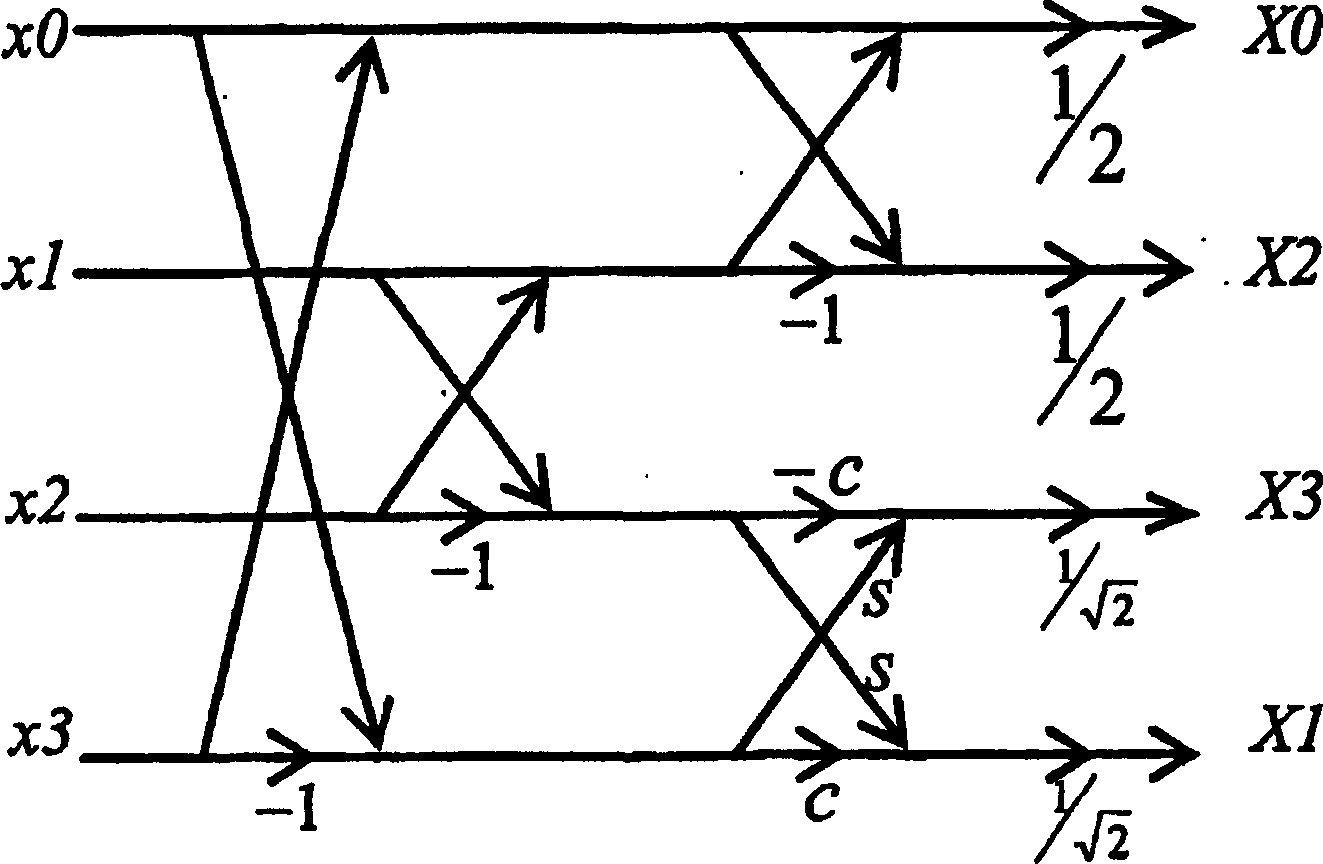Reversible transform for lossy and lossless 2-D data compression
A technology for data, digital media, applied in the field of digital media compression, which can solve problems such as poor approximation, high computational complexity, poor approximation of the desired conversion basis function, etc.
- Summary
- Abstract
- Description
- Claims
- Application Information
AI Technical Summary
Problems solved by technology
Method used
Image
Examples
Embodiment Construction
[0061] The following description relates to digital media compression systems or codecs utilizing improved reversible scale-independent 2D conversion. For illustration, an example of a compression system incorporating improved transformation is an image or video compression system. In addition, the improved conversion can also be added to other 2D data compression systems or codecs, the conversion does not require the digital media compression system to encode the compressed digital media data in a specific encoding format.
[0062] 1. Encoder / Decoder
[0063] Figure 6 and 7 is a generalized diagram of the process employed in a representative 2-dimensional (2D) data encoder 600 and decoder 700 based on the improved reversible scale-independent 2D transform 650 detailed below. This figure gives a generic and simplified illustration of the use and application of this transformation in a compression system incorporating a 2D data encoder and decoder. In alternative encoders ...
PUM
 Login to View More
Login to View More Abstract
Description
Claims
Application Information
 Login to View More
Login to View More - R&D Engineer
- R&D Manager
- IP Professional
- Industry Leading Data Capabilities
- Powerful AI technology
- Patent DNA Extraction
Browse by: Latest US Patents, China's latest patents, Technical Efficacy Thesaurus, Application Domain, Technology Topic, Popular Technical Reports.
© 2024 PatSnap. All rights reserved.Legal|Privacy policy|Modern Slavery Act Transparency Statement|Sitemap|About US| Contact US: help@patsnap.com










